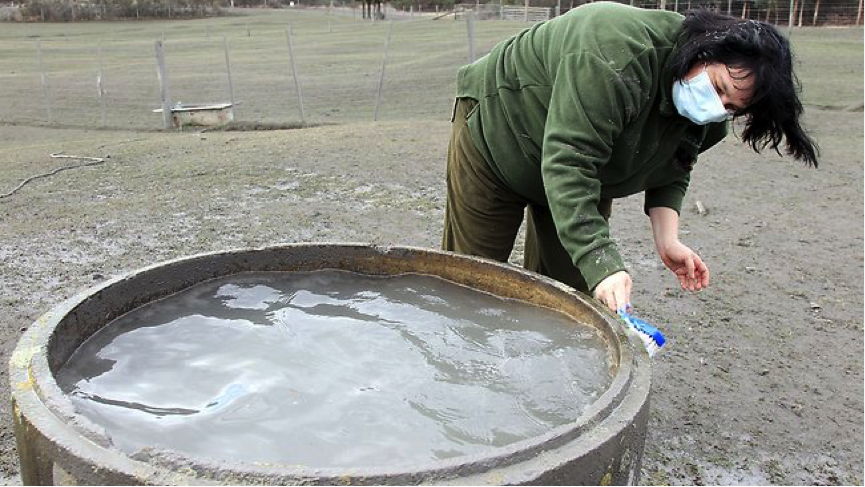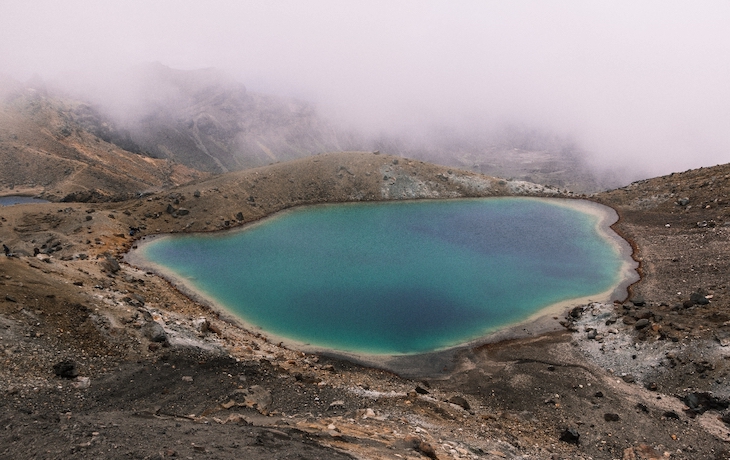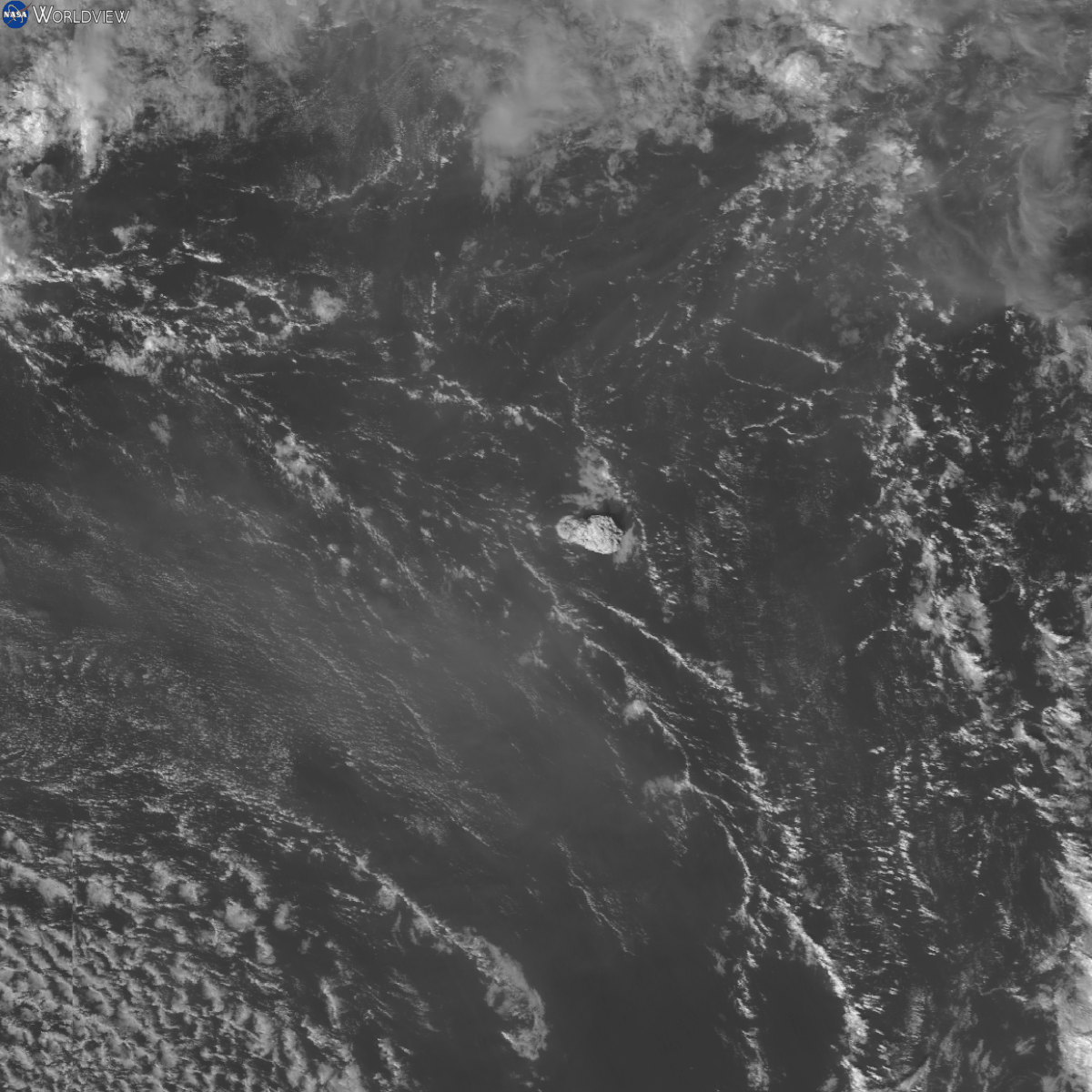The recent eruption of Hunga Tonga-Hunga Ha‘apai on the island nation of Tonga was one of the most violent observed in modern times. But the lava was only the beginning of Tonga’s problems — volcanic ash spread throughout the islands, contaminating drinking water and creating a humanitarian crisis.
https://www.youtube.com/watch?v=gHIujMY1nj8
That led a student in the water survival course to ask if you can filter volcanic ash and debris out of drinking water. A thoughtful question, given filters and disinfectants typically don’t handle contaminants like chemicals or gasses. And because the discharge from volcanoes can be carried downwind quite a distance — like when Europe was blanketed after the 2010 eruption of Eyjafjallajökull in Iceland.
Let’s look at the waterborne dangers of volcanic ash, what water supplies they most affect, and how to safely mitigate the dangers.
Summary:
- Volcanic ash contaminates water in three ways: turbidity (cloudiness), acidity, and chemicals.
- Turbidity turns water to sludge, blocking sunlight and potentially causing water treatment plants to fail, so pathogens are more of a risk.
- Acidity isn’t usually a major risk.
- Out of chemical contaminants, the major one is fluoride.
- Open water sources are especially at risk because they collect the contaminants settling down from the sky.
- Groundwater is safer, as it’s protected from ash, but it should still be filtered.
- Cut water to appliances like dishwashers, hot water heaters, refrigerators, and washing machines to protect them from sludge.
- Strain sludge through a cloth (or bandana, sand, etc.) before adding the water to a proper filter. The sludge will really shorten the life of your main filter, so may as well minimize it.
- A good quality water filter should make the water safe, but make sure it is effective against heavy metals and fluoride.
- Store water to buy time in these situations.
How volcanoes threaten water supplies
Volcanic ash contaminates water in three ways:
- Turbidity, which means the water becomes thick and cloudy with ash particles.
- Volcanic ash is acidic, so it can lower the pH in the water.
- The ash adds many chemical compounds to the water.
The first, turbidity, is the biggest threat to infrastructure. The ash turns the water to undrinkable sludge that clogs up and overwhelms water treatment plants, causing tap water to not only be contaminated by the ash, but also by heavy metals and pathogens that the treatment plant would usually filter out. It also threatens untreated water sources, because the ash prevents sunlight from penetrating the surface, leading to an eruption in pathogen growth.

The acidity factor sounds worse than it usually is. The United States Geological Survey (USGS) states that it usually only causes a small depression in pH, typically dropping it to no lower than 6.5, roughly the same as milk. And in the case of Tonga, the pH of the ash wasn’t much lower than that of drinking water.
Let’s examine the chemicals in volcanic ash. Again, according to the USGS, these are the common elements found in ash:
- Aluminum
- Calcium
- Chlorine
- Fluorine
- Magnesium
- Potassium
- Sodium
- Sulfur
Most of those aren’t big threats. In fact, you could probably use a bit more magnesium and potassium in your diet. Sulfur will make the water smell and taste like farts, but is mostly harmless, though it can cause diarrhea in high concentrations.
The elements to focus on are aluminum and fluorine. Fluorine is a highly toxic gas that can cause liver and kidney damage, even in small concentrations. It’s commonly found in volcanic ash as the ion fluoride.
The good news is that ash-contaminated water has elevated levels of iron and manganese. Combined with the aluminum, ash-contaminated water has a strong metallic taste that makes it unpalatable, so, according to the USGS, you’d have a hard time drinking enough of it to poison yourself.
Water sources most vulnerable to ash
Any open source of water is vulnerable to ash contamination: lakes, ponds, streams, swimming pools, etc. Also, rain collection is at risk, since ash falls on the roofs and accumulates in the water collection system.
Groundwater (eg. wells and springs) is the safest source, since the soil and rocks will filter out many of the chemicals as the water trickles down. However, that’s not a guarantee, and conditions will depend on your area’s geology. Tonga’s alkaline limestone helped neutralize acidic compounds, for instance, but the reservoirs were close to the surface, making them more likely to be contaminated.
How to secure water after a fire or volcano
You need to:
- As best as you can, protect and/or avoid open sources of water.
- Protect appliances from the sludge.
- Try to find underground sources of water.
- Physically remove ash from water so it’s not sludge.
- Filter or distill the water to remove harmful chemicals, especially fluorine.
- Treat the water to remove pathogens.
You may not think there’s much you can do to protect open water. You can’t exactly throw a tarp over a lake or even most ponds. However, there are steps you may be able to take:
- If you have a rainwater collection system, disconnect it from your roof and cover all openings as soon as possible.
- If you have a small pond, perhaps for garden decoration, cover it with a tarp to reduce ash contamination.
Don’t forget your animals. Fluorine in volcanic ash killed over 2,000 grazing animals in New Zealand when Ruapehu erupted in 1995. Livestock may be hard to protect, but you want to guard outdoor pet watering bowls and be aware of any nearby sources they may drink from. For instance, my chickens have dug their own little pond that fills up when it rains.
Another first step to take is to turn off water lines connected to appliances that may be clogged or damaged by volcanic sludge. Namely: your refrigerator, dishwasher, washing machine, and hot water heater. It should be fairly easy to cut off water to the fridge and dishwasher, as each should have its own valve, but you’ll probably have to pull the appliance out first. Your hot water heater should have an easily accessible lever to cut off the water supply. If all else fails, cut off water to the entire house.
Tip: Any time you cut off water to a hot water heater, be sure to turn off the breaker connected to the hot water heater. If it runs without water, the heating elements could burn out.
If water is contaminated by ash, you need to flush it out of the lines before turning the water back on to the appliances. That will require disconnecting the water line, slowly turning on the water, and emptying the sludge into a bucket. You may want a plumber for this, especially for the hot water heater.
More: Never too many buckets: Ten uses for my favorite tool
Underground water sources will be tough to find in an emergency, but if you live near the woods it may be worth scouting for a spring, ideally before an emergency. You’ll have a hard time scouting for anything when the air is full of ash. If you live in an area where ash contamination is likely, consider digging a well for emergencies, and have a way to extract water from the well that doesn’t require electricity.
Thankfully, quality store-bought filters will make the water safe to drink
A good quality water filter should make water safe to drink, but you don’t want to pour pure sludge into it. You can make your filter’s job easier by first pre-filtering it. Grab a bucket and a large piece of cloth like a bandana, towel, or cheesecloth. Using the cloth as a filter, pour the water through it into the bucket, straining out the solids. See my review of St. Paul Mercantile’s water filters for an example.
As far as the filter itself, any of the large gravity-fed filters should be fine, whether Alexapure, Berkey, or St. Paul Mercantile, but if you use a Berkey, be sure to equip the optional fluoride filter (if you can find one right now).
More: Review: I used the Big Berkey water filter every day for the last year and now I can’t go back
The problem with portable water filters is that they don’t usually filter out chemicals and heavy metals. The same goes for water purifiers. The Taupō District Council in New Zealand recommends letting the ash settle and then treating it with bleach, which may work in a pinch if you’re parched, but you’re still at risk of ingesting hazardous chemicals. And the TDC still recommends filtering the water if you’re able.
Finally, be sure to have a sufficient amount of water stored, both for your family and your animals. The turbidity may only last a few days and water filtration can be slow, so your water stores will buy you time.
Other sources
What Are The By-Products Of Volcanic Eruptions? Aquasana. February 2022.


You are reporting the comment """ by on